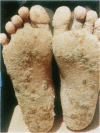Abstract
Nine districts in West Bengal, India, and 42 districts in Bangladesh have arsenic levels in groundwater above the World Health Organization maximum permissible limit of 50 microg/L. The area and population of the 42 districts in Bangladesh and the 9 districts in West Bengal are 92,106 km(2) and 79.9 million and 38,865 km(2) and 42.7 million, respectively. In our preliminary study, we have identified 985 arsenic-affected villages in 69 police stations/blocks of nine arsenic-affected districts in West Bengal. In Bangladesh, we have identified 492 affected villages in 141 police stations/blocks of 42 affected districts. To date, we have collected 10,991 water samples from 42 arsenic-affected districts in Bangladesh for analysis, 58,166 water samples from nine arsenic-affected districts in West Bengal. Of the water samples that we analyzed, 59 and 34%, respectively, contained arsenic levels above 50 microg/L. Thousands of hair, nail, and urine samples from people living in arsenic-affected villages have been analyzed to date; Bangladesh and West Bengal, 93 and 77% samples, on an average, contained arsenic above the normal/toxic level. We surveyed 27 of 42 districts in Bangladesh for arsenic patients; we identified patients with arsenical skin lesions in 25 districts. In West Bengal, we identified patients with lesions in seven of nine districts. We examined people from the affected villages at random for arsenical dermatologic features (11,180 and 29,035 from Bangladesh and West Bengal, respectively); 24.47 and 15.02% of those examined, respectively, had skin lesions. After 10 years of study in West Bengal and 5 in Bangladesh, we feel that we have seen only the tip of iceberg.
Full text
PDF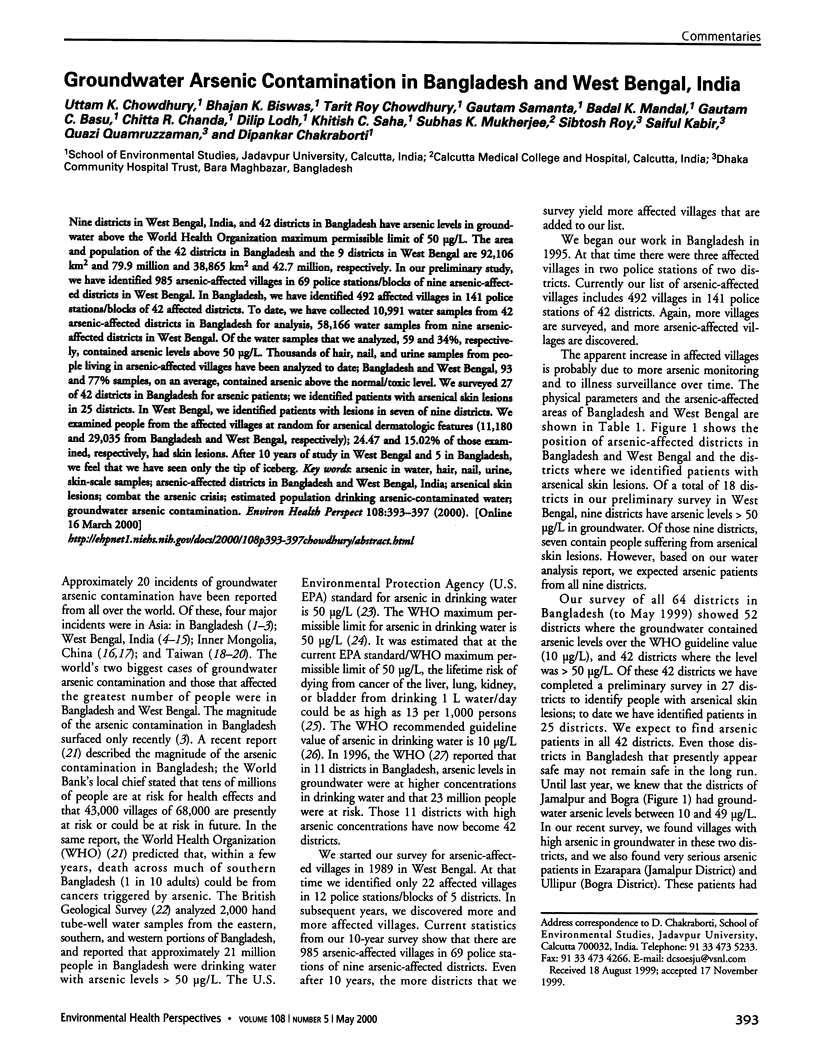
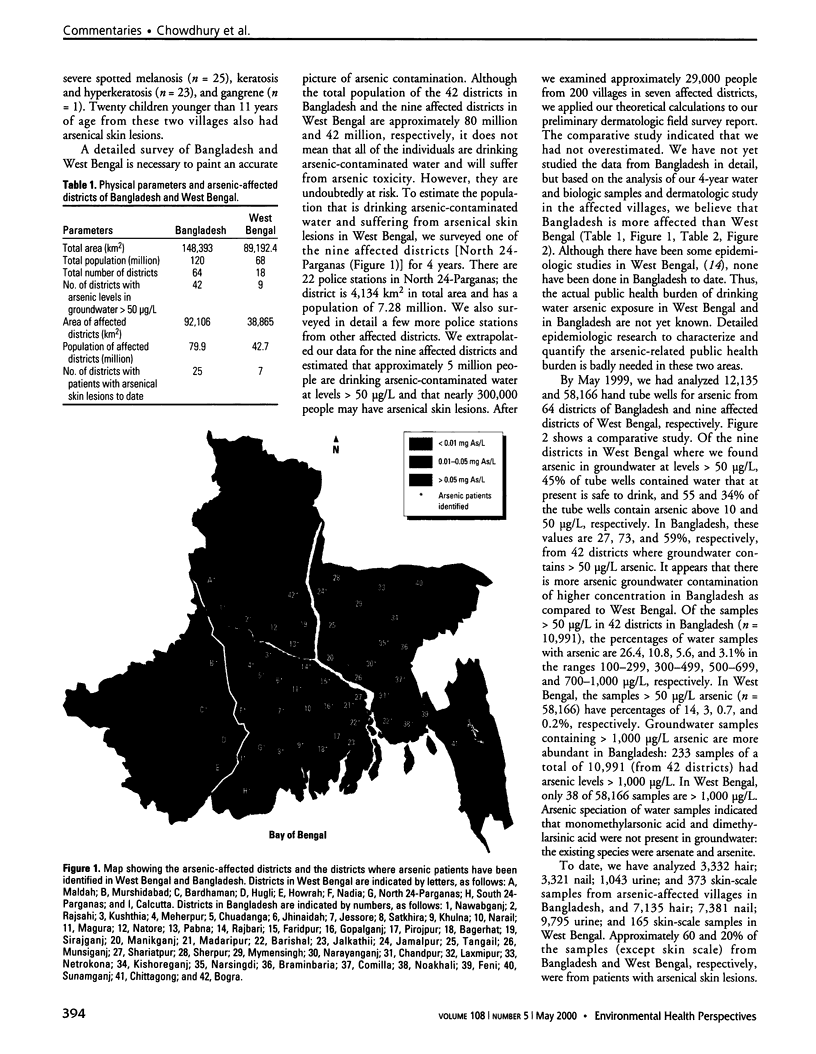
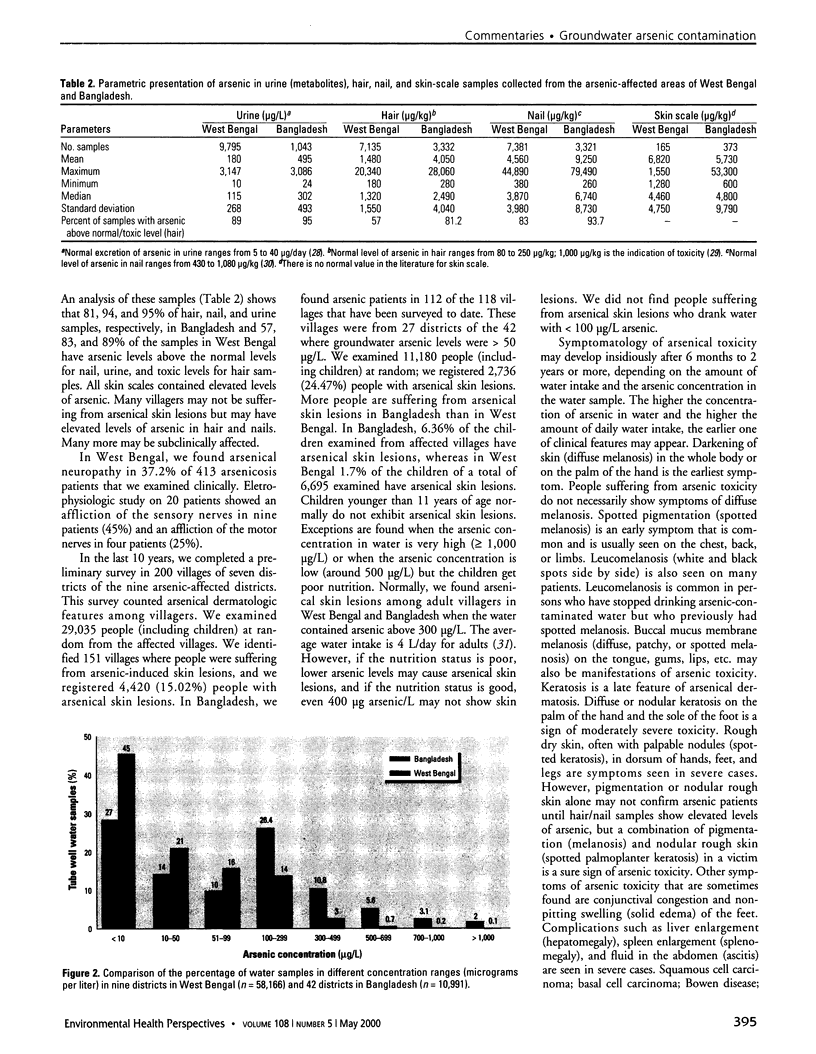
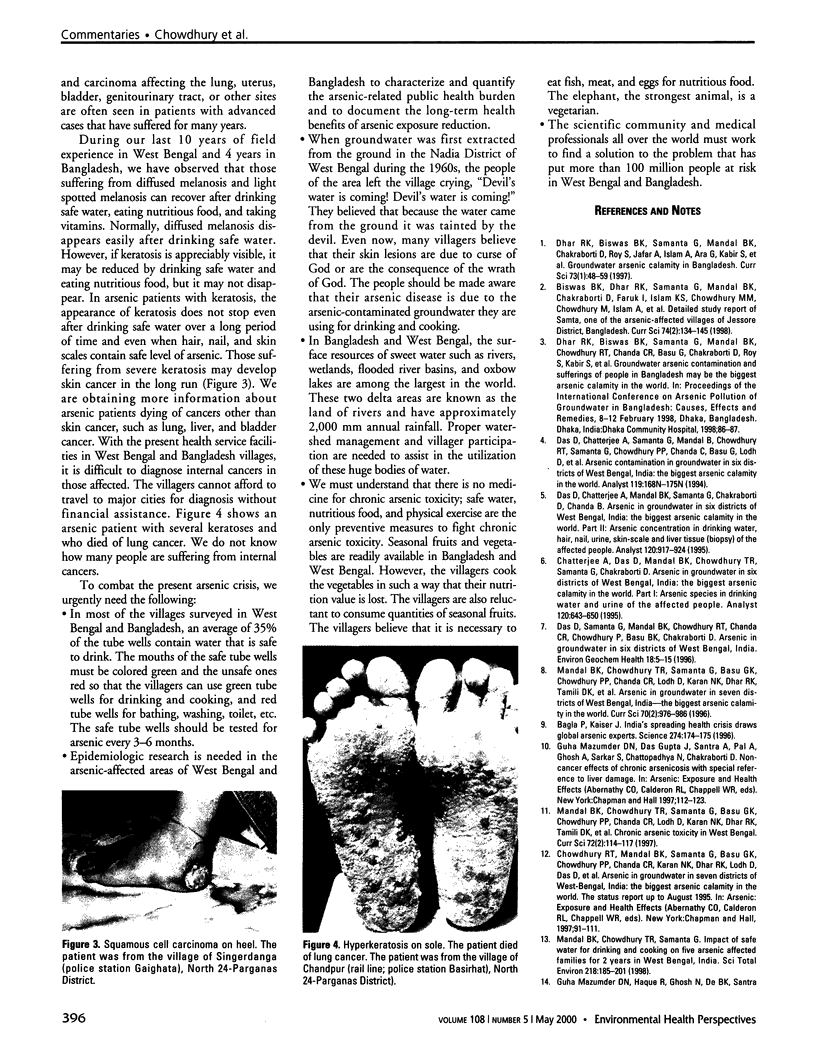
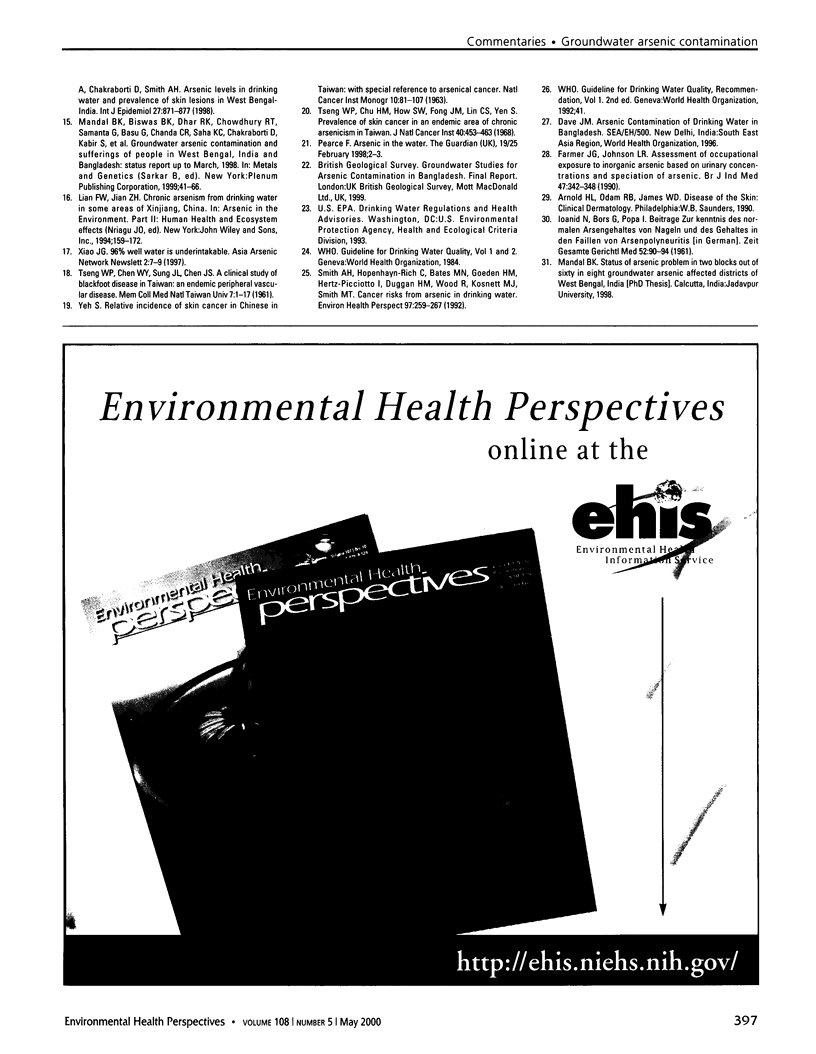
Images in this article
Selected References
These references are in PubMed. This may not be the complete list of references from this article.
- Bagla P., Kaiser J. India's spreading health crisis draws global arsenic experts. Science. 1996 Oct 11;274(5285):174–175. doi: 10.1126/science.274.5285.174. [DOI] [PubMed] [Google Scholar]
- Das D., Chatterjee A., Mandal B. K., Samanta G., Chakraborti D., Chanda B. Arsenic in ground water in six districts of West bengal, India: the biggest arsenic calamity in the world. Part 2. Arsenic concentration in drinking water, hair, nails, urine, skin-scale and liver tissue (biopsy) of the affected people. Analyst. 1995 Mar;120(3):917–924. doi: 10.1039/an9952000917. [DOI] [PubMed] [Google Scholar]
- Das D., Chatterjee A., Samanta G., Mandal B., Chowdhury T. R., Samanta G., Chowdhury P. P., Chanda C., Basu G., Lodh D. Arsenic contamination in groundwater in six districts of West Bengal, India: the biggest arsenic calamity in the world. Analyst. 1994 Dec;119(12):168N–170N. doi: 10.1039/an994190168n. [DOI] [PubMed] [Google Scholar]
- Farmer J. G., Johnson L. R. Assessment of occupational exposure to inorganic arsenic based on urinary concentrations and speciation of arsenic. Br J Ind Med. 1990 May;47(5):342–348. doi: 10.1136/oem.47.5.342. [DOI] [PMC free article] [PubMed] [Google Scholar]
- Guha Mazumder D. N., Haque R., Ghosh N., De B. K., Santra A., Chakraborty D., Smith A. H. Arsenic levels in drinking water and the prevalence of skin lesions in West Bengal, India. Int J Epidemiol. 1998 Oct;27(5):871–877. doi: 10.1093/ije/27.5.871. [DOI] [PubMed] [Google Scholar]
- Mandal B. K., Chowdhury T. R., Samanta G., Mukherjee D. P., Chanda C. R., Saha K. C., Chakraborti D. Impact of safe water for drinking and cooking on five arsenic-affected families for 2 years in West Bengal, India. Sci Total Environ. 1998 Jul 30;218(2-3):185–201. doi: 10.1016/s0048-9697(98)00220-4. [DOI] [PubMed] [Google Scholar]
- Smith A. H., Hopenhayn-Rich C., Bates M. N., Goeden H. M., Hertz-Picciotto I., Duggan H. M., Wood R., Kosnett M. J., Smith M. T. Cancer risks from arsenic in drinking water. Environ Health Perspect. 1992 Jul;97:259–267. doi: 10.1289/ehp.9297259. [DOI] [PMC free article] [PubMed] [Google Scholar]
- Tseng W. P., Chu H. M., How S. W., Fong J. M., Lin C. S., Yeh S. Prevalence of skin cancer in an endemic area of chronic arsenicism in Taiwan. J Natl Cancer Inst. 1968 Mar;40(3):453–463. [PubMed] [Google Scholar]






